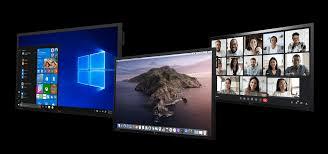Flat Panel Display Market Pain Points Hindering Sustainable Global Growth Path
The flat panel display market has evolved dramatically over the past few decades, transitioning from bulky cathode ray tubes (CRTs) to sleek, high-definition displays in smartphones, TVs, laptops, and beyond. Despite tremendous progress, the market is still grappling with several persistent pain points that impact its growth, profitability, and long-term sustainability. These issues span supply chain bottlenecks, environmental concerns, technology transitions, cost pressures, and increasing consumer expectations. Understanding these challenges is essential for stakeholders seeking to navigate the evolving landscape and maintain competitiveness.

Supply Chain Vulnerabilities and Material Dependencies
One of the most pressing pain points in the FPD market is the vulnerability of its global supply chain. The production of displays involves a highly complex ecosystem of components such as glass substrates, backlighting units, driver ICs, polarizers, and rare earth materials. Much of this production is geographically concentrated in a few Asian countries, particularly China, South Korea, and Japan.
This concentration creates risk. Any disruption—be it from natural disasters, geopolitical tensions, or pandemics—can halt production and impact global availability. The recent global chip shortages and logistic constraints exemplify how sensitive the display industry is to external shocks, leading to delays, higher costs, and missed opportunities for manufacturers and buyers alike.
Rising Raw Material and Production Costs
The flat panel display industry is highly capital-intensive. From acquiring raw materials to operating large-scale fabs, manufacturers face significant expenses. In recent years, costs for critical materials like indium, gallium, and rare earth phosphors have escalated, putting pressure on margins.
Moreover, with consumer demand increasingly favoring high-end display technologies such as OLED and MicroLED, production complexity has grown. These advanced displays require more intricate manufacturing processes and expensive components, further raising costs. Manufacturers must constantly balance innovation with cost-efficiency—a challenge that becomes particularly acute during economic downturns or periods of supply volatility.
Environmental and Sustainability Pressures
Environmental impact is another major pain point. The manufacturing process for FPDs consumes large amounts of energy and water and often involves hazardous chemicals. As regulatory scrutiny intensifies and consumers grow more eco-conscious, companies are under pressure to implement greener practices and reduce their carbon footprint.
However, transitioning to sustainable production methods is not straightforward. It requires significant investment in new technologies, redesigning supply chains, and rethinking product life cycles. Smaller firms in particular may struggle to afford these upgrades, creating a divide between larger players with more resources and the rest of the market.
Rapid Technological Shifts and Obsolescence
Innovation is a double-edged sword in the flat panel display market. While technological advancement drives growth and consumer interest, it also leads to quick product obsolescence and constant pressure on manufacturers to upgrade capabilities. The swift evolution from LCD to OLED, and now to MiniLED and MicroLED, has made it difficult for some players to keep up.
This dynamic results in massive R&D expenses, the risk of stranded assets, and potential write-offs on outdated manufacturing lines. Companies that fail to pivot quickly enough may lose market relevance or find themselves burdened with unsellable inventory and underperforming assets.
Intense Price Competition and Market Saturation
The commoditization of FPDs has led to intense price wars, especially in the LCD segment. As manufacturers race to offer the most competitive pricing, profit margins have steadily eroded. This is particularly problematic for mid-sized firms that cannot compete on volume or innovation.
In mature markets like TVs and monitors, saturation has further amplified pricing pressure. With limited differentiation and slow replacement cycles, manufacturers often rely on discounts and promotions to drive sales—tactics that offer short-term gains but long-term profitability challenges.
Inconsistent Quality and Performance Standards
Another challenge in the FPD market is the inconsistency in product quality, especially at the low end. While premium segments benefit from rigorous testing and quality control, lower-cost products can suffer from uneven brightness, poor color accuracy, or shorter lifespans. These inconsistencies hurt consumer trust and increase return rates, warranty claims, and overall service costs.
Moreover, varying quality standards across regions make it difficult to establish global benchmarks, complicating regulatory compliance and performance evaluations for multinational companies.
Evolving Consumer Demands and Expectations
Consumers today expect more than just crisp visuals—they demand immersive, multifunctional, and environmentally friendly display experiences. This expectation has created additional layers of complexity for display manufacturers, who must now integrate touch capabilities, foldability, low power consumption, and smart features into their products.
Meeting these expectations without driving up costs or compromising reliability is a constant balancing act. Failing to deliver can lead to poor customer reviews, declining brand loyalty, and lost market share, especially in highly competitive segments like smartphones and wearables.
Conclusion
While the flat panel display market continues to grow and diversify, it is not without significant challenges. Supply chain fragility, rising costs, environmental pressures, rapid technological turnover, and demanding consumer expectations all contribute to a landscape filled with obstacles. Navigating these pain points requires strategic foresight, operational agility, and continuous innovation. Only those companies that can effectively address these hurdles while maintaining quality, efficiency, and sustainability will be able to thrive in the long term and lead the future of display technology.
- Art
- Causes
- Crafts
- Dance
- Drinks
- Film
- Fitness
- Food
- Games
- Gardening
- Health
- Home
- Literature
- Music
- Networking
- Other
- Party
- Religion
- Shopping
- Sports
- Theater
- Wellness


